The popularity of lake trout among ice anglers has skyrocketed, and for good reason.
This muscular, worthy predator is pursued on intriguing, deep, cold oligotrophic waters across remote Canadian Shield and Alaskan wilds, deep Western reservoirs and the Great Lakes region. These are adventuresome locations where fish caught might not only be among the largest in any given system, but possibly of record proportions, arguably making this one of ice fishing’s most thrilling opportunities.
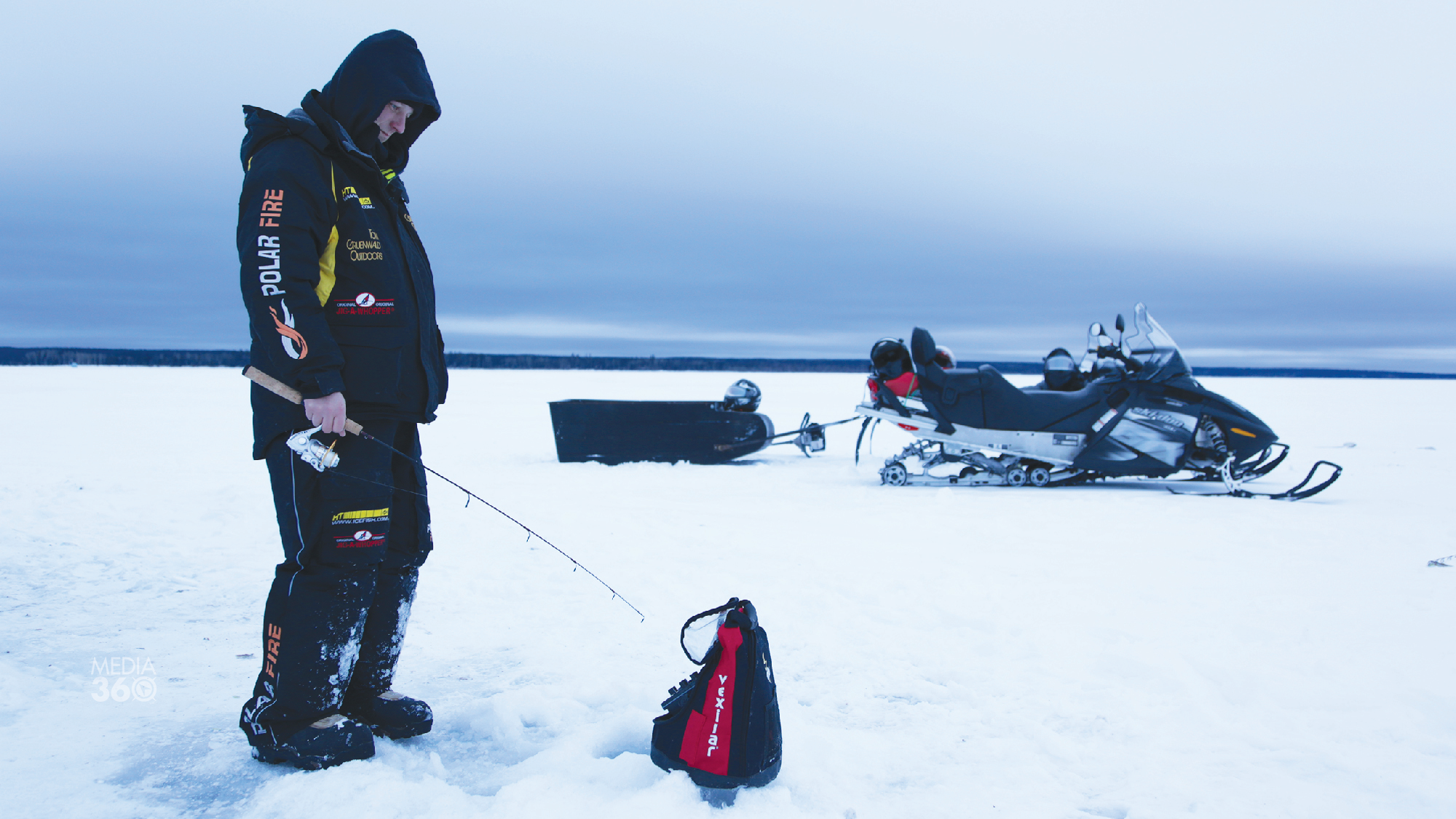
Yet finding them can be a challenge, and while often considered aggressive, lakers can be surprisingly fickle, contentiously following presentations long distances and leaving anglers breathless with anticipation. Then without reason, disappointingly swipe and run or turn away without reacting to even the most artfully displayed and teasingly provocative winter presentation.
Here’s how to tip the scales in your favor.
Location
As summer anglers seeking an apex predator must work strategically at their craft, so must winter lake trout enthusiasts. An accomplished angling pro once told me, “Every lake is a world unto itself.”
That philosophy certainly applies to winter lake trout, as they behave differently based on lake composition, dynamics of the fishery, fishing pressure — and perhaps most importantly — forage base diversity and availability.
To complicate matters, lake trout are inherently marauders of the deep, but during winter when entire bodies of water feature uniformly cold temperatures hovering around 40 degrees Fahrenheit, they move more freely. Fish may hold virtually anywhere, with the most active ones often suspending at various depths.
Sort things out by first identifying mid-depth, 40- to 80-foot-deep main lake points, reefs, sunken islands or saddles between such structures and the flats adjoining them, always looking for irregular bottom contours nearest to the deepest water available in the immediate area. Note coordinates, save them in your GPS and establish a “milk run” plan prioritizing your strategy.
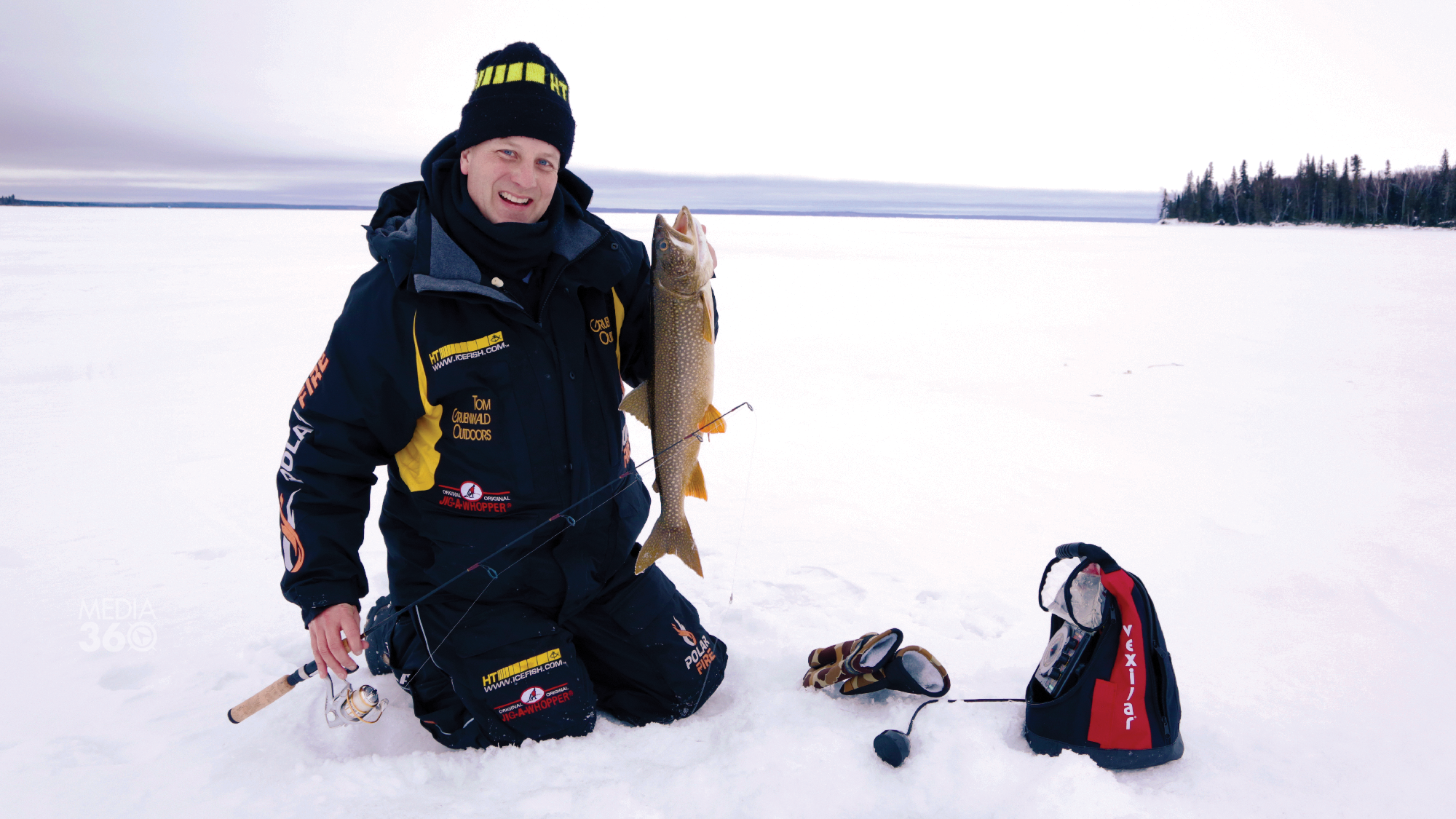
If available, use live scanning sonar to cover large swaths searching for marks along deep slots, steep drops, sheer rock walls and overhangs. Focus on shelves, turns and anomalies like rocky extensions, rock piles or large boulders where, depending on the environment, fish may wait to ambush whitefish, ciscoes, smelt, smaller trout, shiners, sculpin or perch. Being opportunistic, lakers may pin tight to the bottom to forage for sculpins, suspend along steep walls feasting on whitefish, hold over sand flats chasing smelt, or deep basins feeding on cisco, so watch your sonar closely.
One mistake that many ice anglers make is fishing too deep or too far down. When yellow perch are the target forage, lakers are often taken within vegetated mud flats in shallow bays. They might even be over the deepest basins where you initially marked nothing, but upon lowering a lure suddenly see a fish diving down in pursuit, meaning they are cruising high beneath the ice, perhaps using the pack itself as camouflage.
Still, the presence of currents, their strength and direction may also dictate fish positioning. As currents appear, change speed or direction, lakers adjust, taking advantage of the situation by moving down and holding tight to bottom along the back sides of islands, reefs, bars, rock piles or lips of varied bottom contours.
Read the environment and formulate a game plan, but don’t fall victim to stereotypes, and always be alert for changing conditions.
Gear
When fishing small to mid-size lake trout, longer, 36-inch to 54-inch semi-moderate-action, medium- to medium-heavy-powered walleye-style spinning rods are good choices. For larger fish or exceptionally deep water, slightly more stout baitcasting systems may be preferred. Either way, spool with premium, low-stretch 10- to 25-pound braid to help maintain contact with your presentation and improve hook-setting capability. An 18- to 24-inch leader of 10- to 17-pound clear mono or fluorocarbon, attached using a ball bearing swivel to eliminate line twist, reduces line visibility and functions as a shock absorber when fish thrash and head-shake at the hole.

As for lures, start by selecting something similar in size and color to the natural forage. Large tube jigs, jigging minnows, spoons, rattle baits, blade baits, gliding jigs and lipless cranks are all excellent choices when fish are active. Realizing their benefits, hard-core trophy seekers often choose high-profile baits and work them using long, sweeping motions to attract fish from a distance, always using their rod tips to follow the bait down on the fall. This provides maximum presentation control while producing incredibly lifelike movements that can draw vicious strikes.
While swim and tube baits have become the primary plastics of choice, some innovative anglers are also using select plastic trailers in combination with gliding jigs, spoons, swimming minnows and lipless crankbaits. These versatile options provide an intricate, extensive range of alternatives in design, style, size, color and action.
Ripple tails on gliding jigs, lifted and allowed to fall on a semi-slack line, for example, extend out in wide arcs with their tails flowing in undulating waves, providing unique presentations that not only cover water, but help trigger hits, too.
Another underutilized presentation is a spoon tipped with a multi-colored, split-tail plastic. Make sure to balance the size and weight of your tail to the spoon, and take advantage of this unique presentation by lifting the lure, then allowing it to flutter down. The natural rocking action of the spoon offers an attractive wobble and flash that grabs the fish’s attention, while the dangling, scintillating split-tail tipper brings a unique wrinkle to help entice strikes.
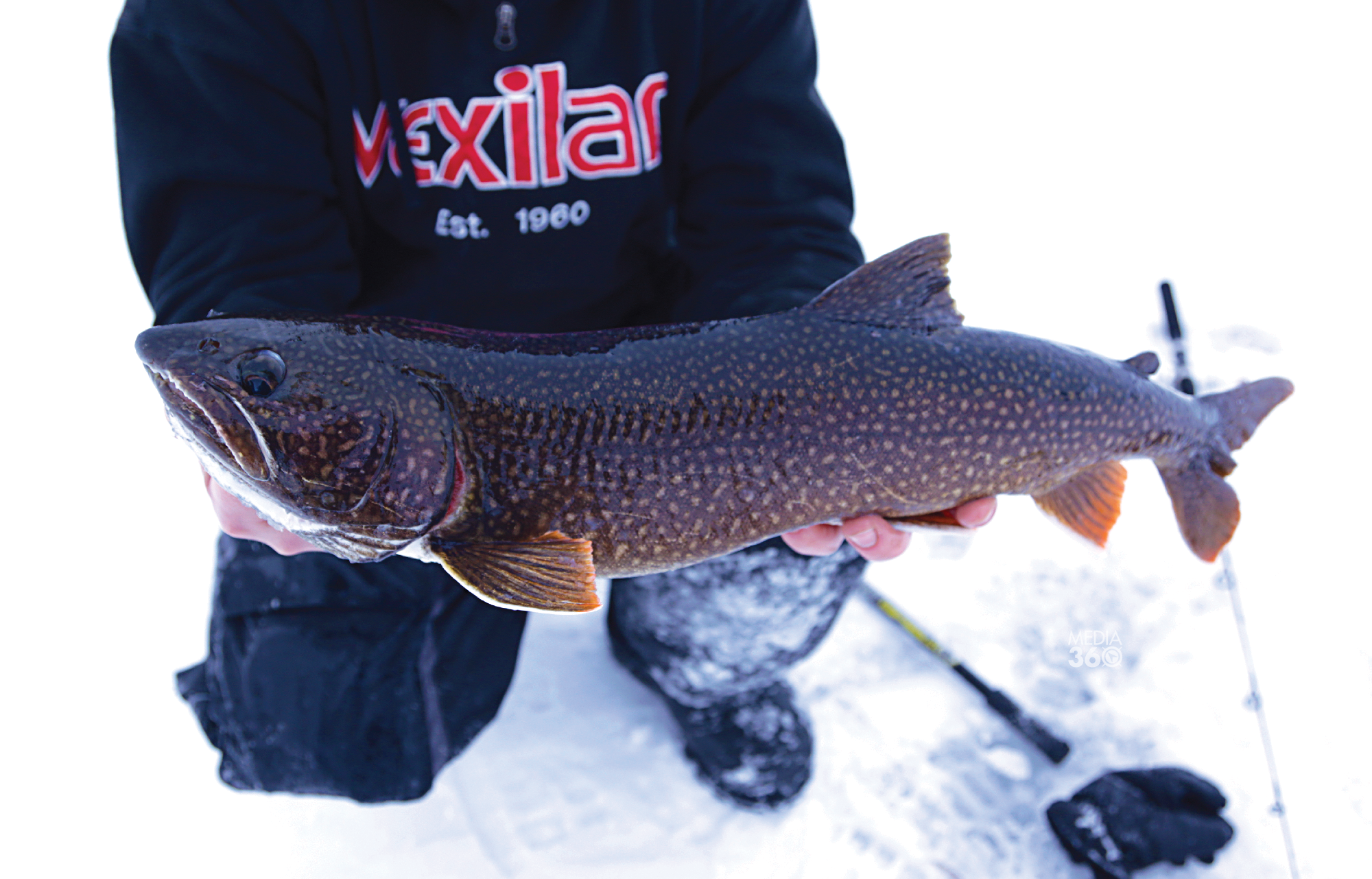
Plastics can also be effective on swimming minnow lures. Adding a small, 1-inch twister or ripple tail to the center hook and working these baits using a classic lift-fall fashion causes the lure to swim in broad semi-circles to bring fish in. Plus, the added motion of the tail offers that little something extra to pique their interest. Don’t overlook this tactic when fishing lipless crank-baits, as well. Action tails make your lure stand out over conventional presentations and can be a huge difference maker, especially when fishing heavily pressured waters.
If fishing pressure decreases activity or lakers are not aggressively chasing, play it down — quite literally. When lakers are being fickle, the key is to slow down and use subtle movements — allow that tipper to work its magic.
Finicky trout are more likely to strike on a slow downward movement, so depending on the depth being fished and the presence or strength of currents, a 3/8-ounce to 2-ounce jig rigged with a tube, plastic creature, or where legal, cut bait, hooked to achieve a slow drop with the selected tipper vibrating slightly as it falls often helps tease takes. Or, as may be the case, lowering and rocking that jig gently on the bottom before lifting it ever so slightly above can prompt lethargic lakers to inhale the lure just as it rises off the bottom. Remain alert — these fish have an uncanny ability to sip and emit a bait with exceptional prowess.
Pseudo drop-shot systems incorporating a cut-bait-tipped jig acting as the drop-weight, with a smaller jig, fly or streamer tied inline 12 to 18 inches above it, is another effective means of teasing apathetic lakers. Such combinations, worked slowly, substantially increase the chances of a strike when lakers are squeamish. The trick is maintaining a slight, rhythmic movement while carefully watching your line. If there is any aberration in the anticipated response to your established motion, set the hook!
Covering Water
There’s little sense cramming multiple competing anglers inside a shack — instead, fan out in search of fish.
Once you identify active lakers by working larger, more aggressive presentations from just beneath the ice to the bottom, focus on the upper third of the water column. Although lake trout may hold anywhere and chase aggressively, I’ve had some of my best success concentrating my efforts high with larger, higher profile lures, especially when targeting larger, more aggressive fish.
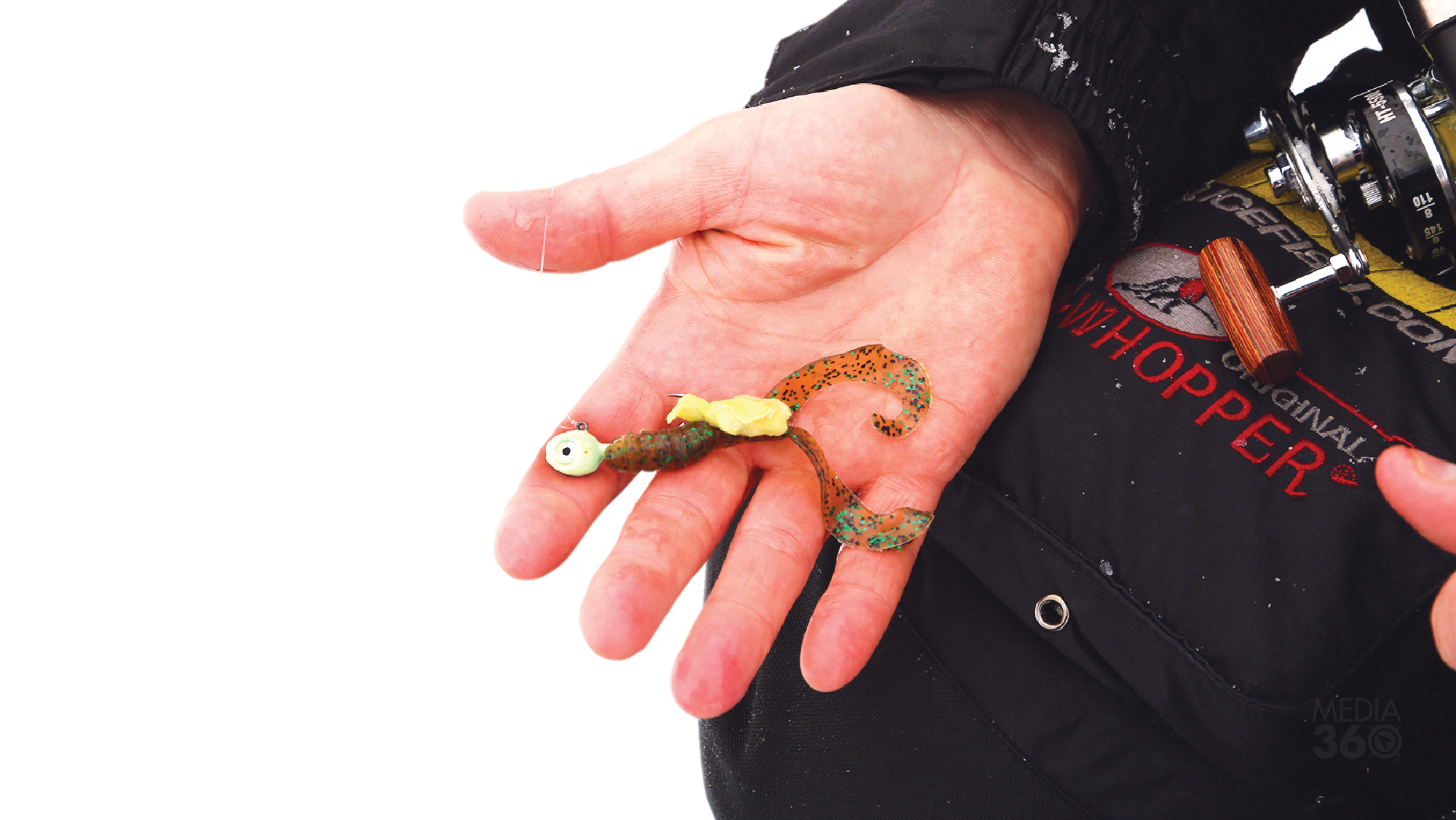
Start by dropping your lure just beneath the ice, within a foot or two, then turn attention to your sonar (or if conditions allow, simply look down to enjoy an unnerving sight-fishing experience) and begin lightly rocking the bait. Should nothing happen, continue with an aggressive 1-foot to 3-foot drop, followed by a slight pause and an equal lift, then another pause before lowering it a foot or two.
At this point, pause again, shaking the bait in place, always maintaining continuous contact with your presentation and keeping your rod at a low enough angle so you have adequate room to set the hook. All too often, I see anglers jigging with their arms fully extended or lifting their rods over their heads. If a fish strikes while in such positions, obtaining a solid hook set is nearly impossible.
Next, give the lure a couple short, 3- to 6-inch hops. If nothing happens, lower the bait 4 or 5 feet (a movement I’ve found often triggers strikes in and of itself!) before pausing and repeating the entire procedure. Continue this routine to about halfway down. At that point, begin working 10- to 12-foot intervals until you reach the bottom. Anytime a fish appears, start working your bait up and away. They will usually commit and often strike readily.
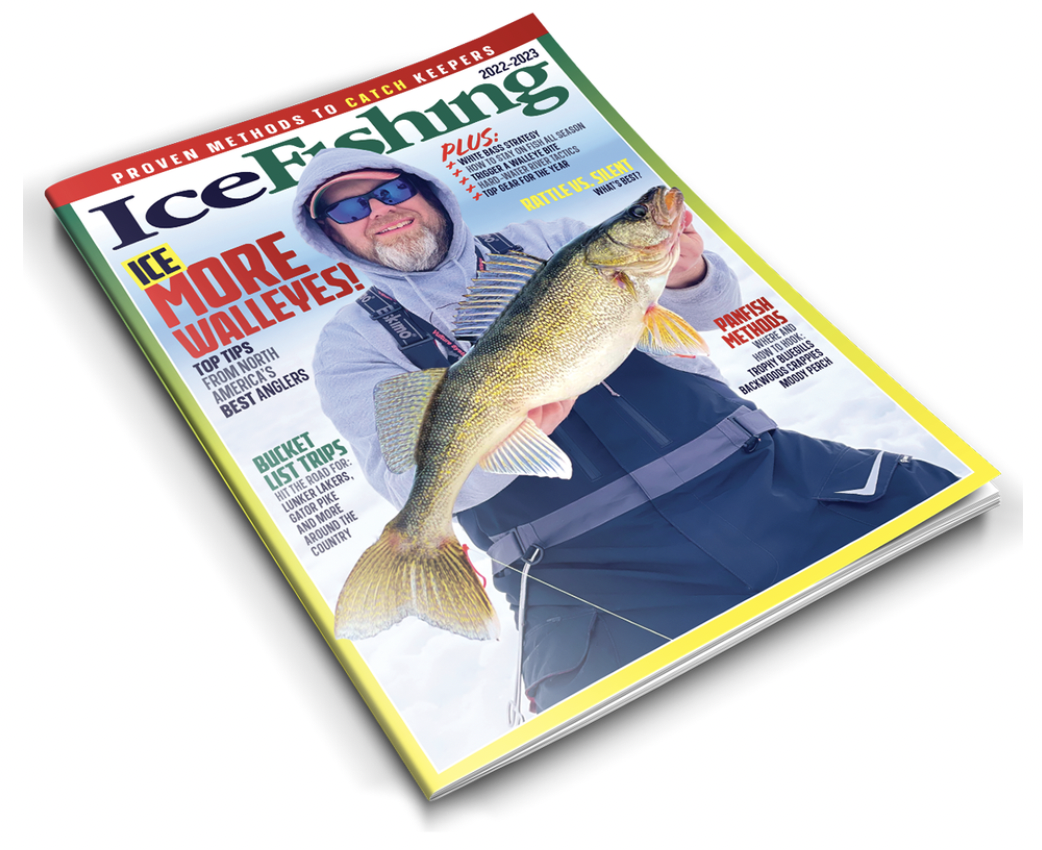
If not, “stop and drop” to see if the fish reacts to a falling bait. Or again, slow things down by switching to a plastic or cut-bait-tipped jig — something I always have pre-rigged on another readily accessible rod. Work these with shorter movements and more of a shaking, finesse-style motion interspersed with longer, more frequent pauses.
If the fish still won’t engage, simply try wriggling your presentation directly on the bottom, then gingerly lift your lure an inch or two and pause a few seconds before allowing the bait to drop back to the bottom as an additional trigger. Then repeat, always watching your line intently for signs of a take. Doing so may be the difference between a successful day and a skunk.
Continue experimenting, efficiently moving from one hole to another while closely watching responses to varied motions. If lake trout are present, they usually reveal themselves. Be thorough, but never spend too much time in one hole. If you encounter unresponsive fish, you can always return to try again later. The trick is to remain mobile and be proactive; this strategy pays huge dividends by allowing you to expose your presentation to the maximum number of fish.
Keep working! As with the pursuit of any apex predator, time between strikes can seem long, but when a hefty lake trout suddenly appears and latches on, your efforts will be richly rewarded.
Tom Gruenwald is a fisheries biologist, an angling writer and author of four books on ice fishing. Look for him on his television program, “Tom Gruenwald Outdoors.”







![Air gun 101: The differences between .177 & .22 – Which jobs they do best ? [Infographic]](https://airgunmaniac.com/wp-content/uploads/2020/09/g44-218x150.jpg)








































